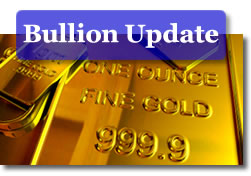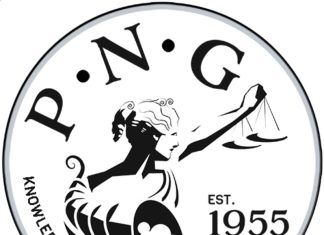Good Morning,
The $61 billion financial adrenaline shot given to Greece by the euro-region and the IMF helped resuscitate the euro overnight and gave a further lift to the precious and base metals markets. The US dollar fell about 0.35 on the index, and was earlier seen hovering near the 80.55 level. The biggest move in the overnight markets however was in the cost of insuring against a Greek default; it fell by the largest amount on record.
Thus, as that risk came tumbling down following the team handout (which is really not a gift, but rather a series of loans intended to avert that which appeared all but inevitable as of Friday) to Greece, other risks, and the taking thereof, started to once again look…appetizing. Overnight gold prices touched a high of nearly $1169 per ounce.
Still, observers note that regardless of the ‘loan’ label being worn by the aid package, the reality is that it all amounts to subsidization, a longer-term unfavourable factor for the euro, and it does not do away with Greece’s (or the other PIIGS countries’) problems. Thus, Ms. Merkel may have caved into peer pressure this weekend, but her original reluctance may yet well be vindicated in the long-run. For now, however, what has really been bought here (aside from speculative confidence) is time. Nothing but time.
In fact, the Wall Street Journal’s Richard Barley minces few words when he concludes that: "The euro zone should be working on a Plan B, if it wishes to retain credibility. The real challenge in Greek fiscal consolidation may come in 2011 or 2012. While the 2010 process is yielding fruit, fatigue may set in down the road. The need may yet arise for a mechanism for an orderly restructuring of sovereign debt within the euro zone. Ultimately, this could strengthen the euro as an institution.
Policy makers should use the time that Sunday’s deal has bought to work out what they would do if it doesn’t solve the problem–and Greece ends up following in the footsteps of Argentina, which defaulted after a decade of IMF bailouts."
The latest reported CFTC data reveals that speculative length for precious metals has risen further, with gold witnessing the largest rise in speculative activity, closely followed by silver. Open interest in gold jumped by some 54,000 contracts in the latest reporting period. The non-commercial longs in COMEX gold have risen to 815 tonnes (of which 720 tonnes are net longs) –shades of last December? Also rising, the chorus of calls for astronomically-priced gold as an imminent reality.
However, as we reported last week, black gold has also experienced a sizeable increase in non-commercial long positions. In a situation harking back to the white-hot speculative days of 2008, Iranian supertankers are once again engorged with surplus crude equivalent to Europe’s entire needs for one day. The speculative length in NYMEX West Texas Intermediate is currently at levels we last saw in January, before the sharp sell-off in the stuff.
Speculation is also alive and well in the noble metals’ complex. For example, platinum’s and palladium’s non-commercial long positions remain extremely high, with the former currently standing at 62% of open interest, and the latter with a 55% of open interest. While such a status quo implies quite a bullish outlook for the noble metals, like oil, they remain at risk of a large-scale sell-off should the post-Greek deal emerging risk appetite suddenly decline.
Monday morning’s spot metals trade opened with smallish gains, hampered by a mild recovery in the greenback (now back to 80.70 on the index and at 1.359 against the euro) and a small slippage in crude oil (down about half a dollar to $84.50 per barrel). Gold started the session with a $1.20 per ounce rise, quoted at $1162.60 while silver added 9 cents to open at $18.48 per ounce. Platinum continued to rise, adding $4 to open at $1725.00 while palladium climbed $2 to start at $513.00 the ounce. Rhodium scaled higher as well, quoted at $2780.00 on the bid-side. So, will the longs get longer, will they push beyond $1174 or $1187? Will a match of the $1200 or $1226 levels reoccur? Does anyone have the answers?
Some believe they do, and are resolutely tendering the prospect of $2K gold –no more, no less– as a given for this year. Others, notably, Goldman Sachs (Wait! That’s a name that is taboo in manipulation-land) opine that things might go in a bit of a different direction. GS (sounds better, doesn’t it?) reduced its three-month gold forecast by 8%, to $1,155.00 a troy ounce last night, down from its late-March projections of $1,260.00 an ounce. GS also reduced the 2010 full-year forecast for gold to $1165 from $1350 per ounce. Said the GS analysts: "While we continue to expect gold prices to move higher this year, higher U.S. real rates off the back of stronger economic activity will likely reduce some of that upside."
Remember, these are averages, not hard individual price-point targets. For the moment, the GFMS projection of a possible $1300 sounds a bit more plausible than the $1500 or $2000 gold promises still being offered out there. In early January we offered the possibility of a $1280 high prior to mid-year. The inside channel low we projected on the 4th of that month was $970-a number that thus far the market has come only $88 close to. Stay tuned for Q2. That is, if price is the overriding obsession. Otherwise, just stick with the core insurance position.
There are other overheated niches to observe "out there" as well. The most obvious one is China’s real-estate market, which is practically boiling over. Investors are being cautioned to steer clear of the developers sector after those shares fell by the most this year. This, according to Nomura Asset Management, Hong
Kong Ltd.
Bloomberg reports that "property prices in China rose at the fastest pace in almost two years in February, spurring warnings of asset bubbles. Hedge fund manager James Chanos said last week that China is "on a treadmill to hell" and that the land market is a bubble that may burst as early as this year. The SE Shang Property Index slumped 2.8 percent today, the most since Feb. 5."
Chinese regulators are reportedly demanding that local lenders report their risk exposure to borrowers, including local governments, by the end of June. Such news obviously affected Chinese equities overnight but it has yet to impact the base and precious metals. A potential clampdown on borrowing –now expected in Q4– could well impact on liquidity, and therefore the locals’ aptitude to purchase metals, towards the end of 2010 (barring, of course, a self-triggered implosion in the real estate sector without the ‘intervention’ of regulators).
Again, as with the Greek matters above, it is all but a matter of time. Whoever wished that we "may live in interesting times" well,…they must be quite content these days. Depending on your definition of "interesting" of course…
Happy Trading.
Jon Nadler
Senior Analyst
Kitco Metals Inc.
North America
Blog: http://www.kitco.com/ind/index.html#nadler
In addition to the bullion 2010 American Silver Eagle that is already available, the United States Mint this year will also issue the bullion America the Beautiful Silver Coins. Click on the link to learn about the coin and the new bullion series from the Mint.











